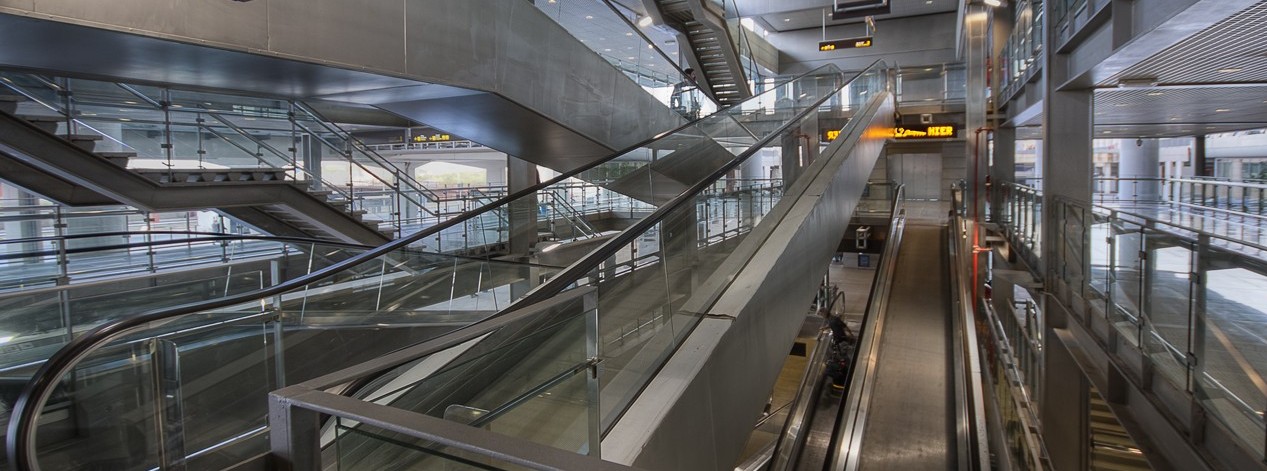We always like when we see a picture with clouds motion in the sky and the blur effect due to long exposure times. This gives a surrealistic touch to the images. But the question for common people is how a photographer gets this effect.
The approach depends on the time hour, if it is near night or if we are in the midday or not near to dawn or after twilight.
During the day, to increase the exposure time it is necessary to decrease ISO (but this can be only done in some professional cameras and only 1 step, from ISO 100 to ISO 50). Or another solution it is to use small apertures (around f/22). But it is usual that although the diaphragm is very close, the estimated time for the exposure was not sufficiently long. So the solution is to use what photographers call Neutral Density filters (ND).
The ND filters rise the time exposure by several stops ( a stop is the halving or doubling of the amount of light availables and means double exposure or as consequence double time for exposure). So it is usual to select one depending on the time requested or effect in the sky (if for example there is so few wind, we will need a ND with more stops). The usual filters and their stops increase are:
· ND2 (or ND0.3) : 1 stop
· ND4 (or ND0.6): 2 stops
· ND8 (or ND0.9): 3 stops
· ND400 : 8 2/3 stops
· ND1000 : 10 stops
So that means that when you use a NDx filter, x is equal to time multiplier ( that is 2 ^ stop), the time for the exposure will be the exposure reads by camera meter without filter multiply by x. It is usual to measure exposure without filter, due to 3 reasons:
– The use of ND filters produces warm or cold hues and changes your White Balance. So if you want to use the appropriate WB, you need the camera metering without filter to set it later in your RAW editor. Although, you sometimes prefer the colors created with the filter.
– As the filter is so dark ( e.g ND400, ND1000) the camera has not light to calculate an exposure time. So in Bulb mode, you manually select the time.
– Due to the same problem, the camera can’t focus automatically.
How you are seeing, for long exposures (time > 30 s), you need to set you camera as follow:
– Set Bulb Mode ( because you time is > 30 s and other modes don’t support this).
– Use low ISO to avoid noise due to long exposure.
– Use a remote control to release the shot in order to avoid camera shake.
– Pre-focus without filter or use manual focus.
– And of course, to use a tripod or put the camera in a fixed surface.
Clouds Vanishing On Arganzuela Footbridge
Manzanares riverside, Madrid (Spain).
Canon EOS 5D Mark III | Canon EF 17-40mm f/4L USM + Hoya ND400 @ 19 mm | f/22, 33 s, ISO 100. BW from 1 exposures on a tripod
But during the night they are more problems to get a correct exposure. Then, You don’t need the use of ND filters but you should take into account:
– As it is so dark, the camera again has problems to focus, but now you can’t usually focus automatically (or pre-focus) as during the day. So you can use Live View Mode to select manually the focus distance, with the help of a lantern e.g. or use what it is called hyperfocal distance ( in a short-hand, it is the distance to focus for the best sharpness, widest deep-of-field, DOF). The hyperfocal distance depends on your DSRL type sensor (Full-Frame or APS-C), lens focal length and aperture. You can get tables to calculate it.
– And again, due to you have so few light, you need to set manually your time exposure. But now, the solution to calculate the time is to increase ISO and/or increase aperture (decrease f-stop number) and to take the time measure with AV mode and later adapt it for the aperture and ISO that you want or need to select with the Bulb mode. So each increment in ISO ( for example ISO 100, 200, 400) means double time. And each f-stop decrement (for example f/11, f/8, f/5.6, f/4 …) does the same.
Moonlit At Juan Carlos I Park
North Pond, Juan Carlos I Park, Madrid (Spain).
Canon EOS 450D | Sigma 10-20mm f4-5.6 DC EX HSM @ 11 mm | f8, 26s, ISO 100. HDR/DRI from 3 exposures on a stable surface @ [-2 EV .. 0 .. +2 EV ]
Now, you are thinking, this is more to calculate, I am not a mathematics … what I do to simplify this ? I am going to get you several tips:
• When I used my Canon EOS 450D (APS-C) and Sigma 10-20mm lens @ 10mm, I adapted the hyperfocal distance to a visible mark in the focus ring (usually 3 fts), so then my aperture was conditioned to f/4 or f/5.6 , I don’t remember exactly. So you can do similarly in you workflow.
• To use Photopills or a similar software with calculators for your mobile. With Photopills you have hyperfocals calculator, Exposures calculator (for ND filters) and more, but this will be a topic for another post.
Hyperfocal Distance Calculator
Exposure Calculator






